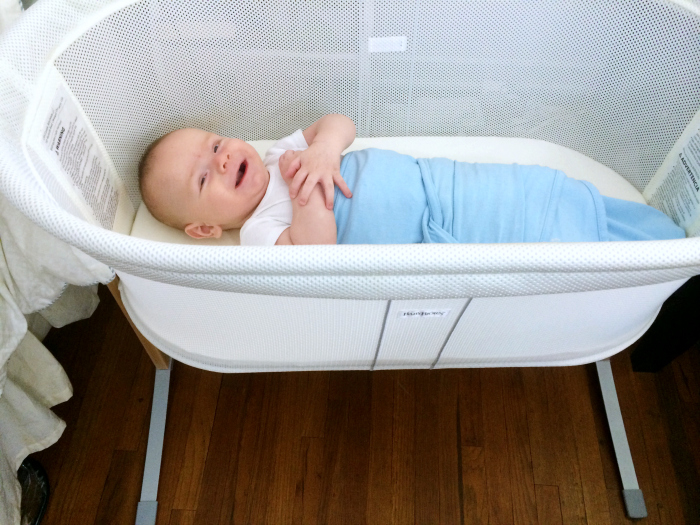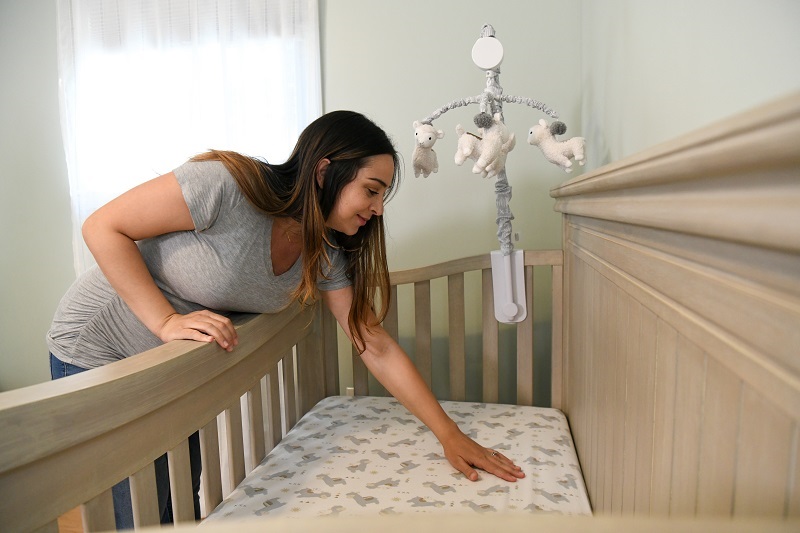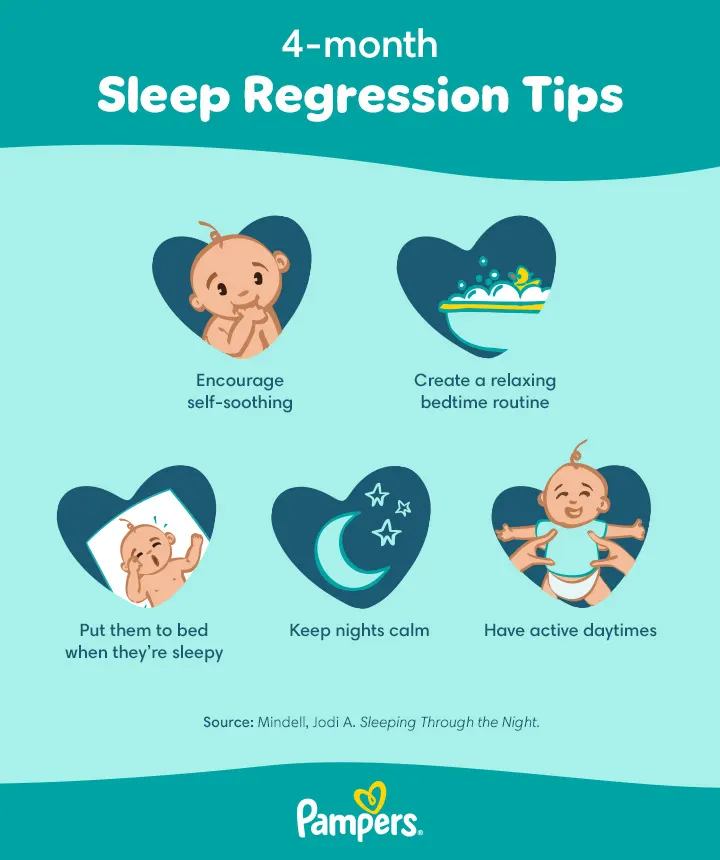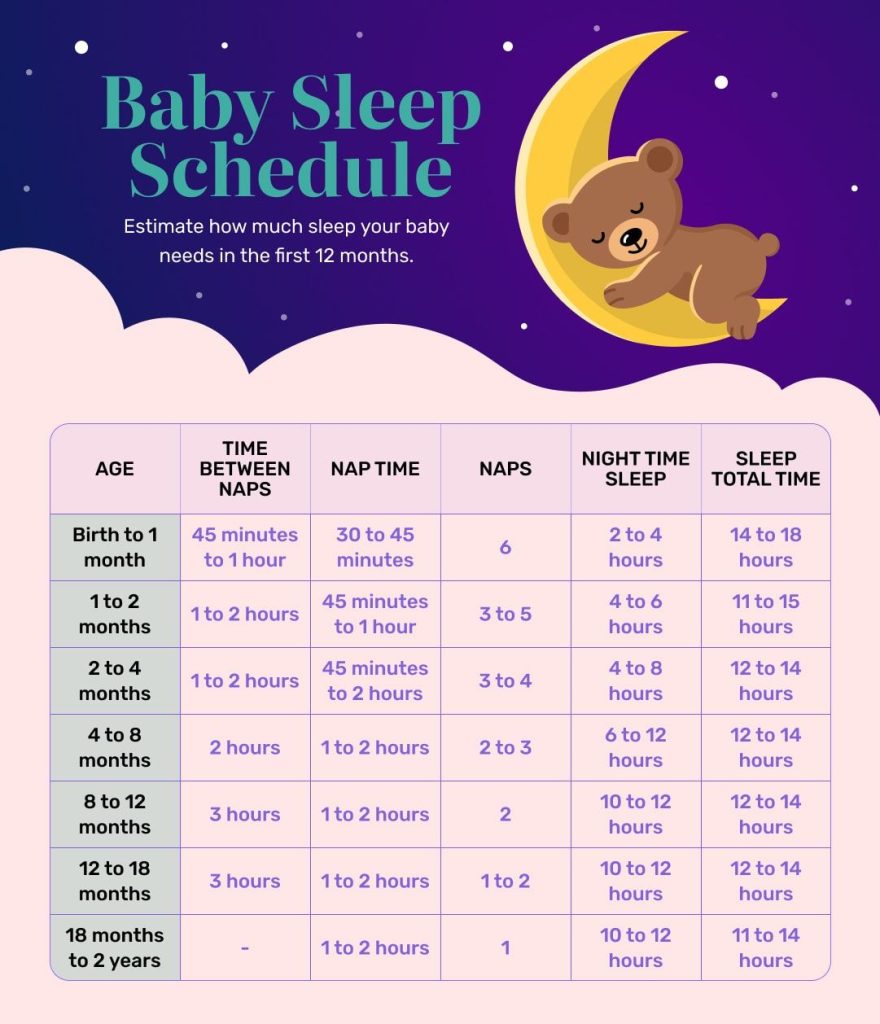To transition a baby to a crib, start by establishing a consistent bedtime routine. Gradually increase crib time during naps.
Transitioning a baby from a bassinet to a crib can be challenging for parents. A smooth transition involves creating a comfortable and familiar sleep environment. Establishing a consistent bedtime routine helps signal to the baby that it’s time to sleep.
Start with small steps, like allowing the baby to nap in the crib during the day. Gradually, increase the time the baby spends in the crib until they are comfortable sleeping there overnight. Using familiar blankets or a favorite toy can also help make the crib feel more secure. Patience and consistency are key to a successful transition.

Credit: www.katiedidwhat.com
Preparing The Crib
Transitioning your baby to a crib can be challenging. Preparing the crib properly is essential for a smooth move. Let’s explore how to create a safe and comfortable crib environment.
Choosing The Right Crib
Choosing the right crib ensures your baby’s safety. Look for a crib that meets current safety standards. The slats should be close together to prevent your baby from slipping through. Ensure the crib has no drop-side rails, which can be dangerous.
Here are some key points to consider:
- Check for certification labels like JPMA.
- Ensure the crib is sturdy and well-built.
- Adjustable mattress heights for convenience.
Safe Bedding Options
Safe bedding is crucial to avoid risks. Use a firm mattress that fits snugly in the crib. There should be no gaps between the mattress and crib sides. A fitted crib sheet is all your baby needs.
Avoid the following:
- Soft bedding like pillows and blankets.
- Bumpers and stuffed toys inside the crib.
- Loose sheets that can cause suffocation.
Remember, less is more. A simple setup keeps your baby safe.
Creating A Sleep-friendly Environment
Creating a sleep-friendly environment is crucial for transitioning your baby to a crib. A well-prepared space helps your baby feel comfortable and secure. Here, we will discuss how to set up the perfect environment for your baby’s crib.
Optimal Room Temperature
The room temperature plays a vital role in your baby’s sleep quality. The ideal temperature for a baby’s room is between 68°F and 72°F (20°C to 22°C). A room that is too hot or too cold can disturb your baby’s sleep.
Use a room thermometer to monitor the temperature. Dress your baby in lightweight sleepwear. Avoid heavy blankets or multiple layers. A simple sleep sack can keep your baby warm and safe. Ensure proper ventilation to maintain air quality.
White Noise Machines
White noise machines can be a game-changer for your baby’s sleep. These machines mask background noises, creating a calming environment. The consistent sound helps your baby sleep longer and more soundly.
- Choose a white noise machine with adjustable volume.
- Place it at a safe distance from the crib.
- Use sounds like rain or ocean waves for a soothing effect.
White noise can also help signal bedtime to your baby. Turning it on can become part of your bedtime routine. This consistency helps your baby recognize it’s time to sleep.
By focusing on these elements, you can create a sleep-friendly environment. This will make the transition to the crib smoother and more successful.
Establishing A Bedtime Routine
Transitioning your baby to a crib can be challenging. Establishing a bedtime routine helps ease the process. Consistency and calmness are essential. A predictable routine signals bedtime. It helps your baby feel secure and relaxed.
Consistent Sleep Schedule
A consistent sleep schedule is crucial. Set a regular bedtime and wake-up time. Stick to these times, even on weekends. This helps regulate your baby’s internal clock. Consistency makes it easier for your baby to fall asleep.
- Set a fixed bedtime
- Stick to the same wake-up time
- Maintain the schedule daily
Track your baby’s sleep patterns. Adjust the schedule if needed. A well-rested baby is a happy baby.
Calming Activities Before Bed
Calming activities help your baby wind down. Quiet activities signal that it’s time for sleep. Some calming activities include:
- Reading a short story
- Giving a warm bath
- Singing a lullaby
- Gentle rocking
Dim the lights during these activities. Lowering the lights helps create a peaceful atmosphere. Avoid stimulating activities before bed. This includes screen time and loud noises.
Consider using a white noise machine. White noise can soothe your baby. It also blocks out background sounds. This can help your baby stay asleep longer.
Consistency with these activities is key. A predictable routine makes bedtime smoother. It helps your baby know what to expect each night.

Credit: www.hackensackmeridianhealth.org
Gradual Transition Techniques
Moving your baby from a bassinet to a crib can be challenging. Using gradual transition techniques can make this easier. These methods help your baby feel safe and secure.
Starting With Naps
Begin by placing your baby in the crib for naps. This helps them get used to the new environment during the day. Ensure the crib is comfortable and similar to their usual sleeping place.
Follow these steps:
- Start with one nap in the crib each day.
- Gradually increase the number of naps in the crib.
- Keep the same bedtime routine for consistency.
Using A Lovey Or Comfort Item
Introduce a lovey or comfort item to the crib. This item can help your baby feel secure. Choose a soft toy or blanket that your baby likes.
Steps to introduce a comfort item:
- Let your baby hold the item during feedings.
- Place the item in the crib during naps and bedtime.
- Ensure the item is safe and free from choking hazards.
Using these techniques can make the transition smoother. Your baby will feel more comfortable and secure in their crib.
Managing Night Wakings
Transitioning your baby to a crib can lead to night wakings. This is natural. Babies need time to adjust to their new sleeping environment. Here are some strategies to help manage these night wakings effectively.
Gentle Reassurance Methods
When your baby wakes up at night, they might feel scared or confused. Use gentle reassurance methods to comfort them:
- Soft Voice: Speak to your baby in a soft, calming voice. This helps them feel safe.
- Gentle Touch: Pat their back or rub their tummy lightly.
- Stay Calm: Your calmness will help soothe your baby.
- Consistent Routine: A consistent bedtime routine reassures your baby.
Avoiding Overstimulation
Overstimulation can make it hard for your baby to fall back asleep. Here are some tips to avoid it:
- Dim Lights: Keep the room dim to avoid waking your baby fully.
- Quiet Environment: Reduce noise levels to create a calm atmosphere.
- Minimal Interaction: Keep interactions brief and soothing.
- No Playtime: Avoid playing with your baby during night wakings.
Dealing With Separation Anxiety
Transitioning your baby to a crib can be a challenging time. One major hurdle parents face is dealing with separation anxiety. Babies often feel anxious when separated from their parents. This anxiety can make the crib transition difficult. Here are some effective strategies to help your baby feel more comfortable.
Comforting Presence
Your presence can be very reassuring for your baby. Stay close to the crib initially. Gradually increase the distance over time.
- Sit by the crib until the baby falls asleep.
- Hold their hand or gently pat them.
- Leave a piece of your clothing near the crib.
These small actions can provide a sense of security. This reduces the baby’s anxiety significantly.
Short Goodbyes
Keep your goodbyes short and sweet. Long goodbyes can increase anxiety. A quick hug and a kiss should suffice.
- Say goodnight with a smile.
- Use a calm and soothing voice.
- Reassure them that you will be back soon.
Consistency is key. Stick to the same routine every night. This helps your baby to understand and expect the transition. They will feel more secure and less anxious.
Monitoring Progress
Transitioning your baby to a crib can be challenging. Monitoring progress is essential. It helps you understand what works and what doesn’t. This section will guide you on how to keep track effectively.
Keeping A Sleep Diary
Keeping a sleep diary is very important. Note down sleep times, wake times, and naps. Record how long it takes for your baby to fall asleep. Include any disturbances or wake-ups during the night. This helps identify patterns and problems.
Here’s a simple table to get you started:
| Date | Sleep Start Time | Wake Time | Naps | Comments |
|---|---|---|---|---|
| 01/01/2023 | 8:00 PM | 7:00 AM | 2 (10 AM, 3 PM) | Woke up twice |
| 01/02/2023 | 8:30 PM | 7:30 AM | 2 (10:30 AM, 3:30 PM) | Woke up once |
Adjusting Techniques As Needed
Every baby is different. Adjusting your techniques is crucial. If your baby struggles, try different methods. Some babies need a nightlight. Others need complete darkness. Experiment with these adjustments:
- Change the bedtime routine
- Adjust the room temperature
- Use white noise machines
- Introduce a comforting toy
Regularly check your sleep diary. See what changes work best. Make small adjustments and monitor results. This ensures a smoother transition.
Seeking Professional Help
Transitioning your baby to a crib can be challenging. Sometimes, professional help is needed. Experts can provide valuable guidance and support. Here are key points to consider when seeking professional help.
When To Consult A Pediatrician
If your baby struggles with sleep, consult a pediatrician. Pediatricians understand sleep issues and can provide medical advice. They can identify any underlying health issues. These issues may affect your baby’s sleep patterns.
Signs to consult a pediatrician include:
- Frequent night waking
- Difficulty falling asleep
- Excessive crying
- Health concerns
A pediatrician can recommend safe sleep practices. They can also suggest gentle techniques to help your baby adjust. Always trust your instincts as a parent. If something feels off, seek medical advice.
Sleep Training Specialists
Sometimes, sleep training specialists are the best option. They are experts in baby sleep patterns and methods. A sleep training specialist can create a personalized plan. This plan will cater to your baby’s unique needs.
Services offered by sleep training specialists:
| Service | Description |
|---|---|
| Consultation | Initial assessment of baby’s sleep habits. |
| Customized Plan | Personalized sleep training plan. |
| Ongoing Support | Follow-ups and adjustments as needed. |
Working with a specialist can ease the transition. They provide professional advice and emotional support. It’s important to choose a certified sleep specialist. They should have experience with infant sleep training.
Remember, seeking professional help shows you care. It ensures your baby gets the best possible sleep. Better sleep leads to a happier, healthier baby.

Credit: www.newtonbaby.com
Frequently Asked Questions
How Long Does It Take A Baby To Get Used To A Crib?
Babies typically take 3-7 days to get used to a crib. Consistent bedtime routines help ease the transition.
What Is The Easiest Way To Transition Baby To Crib?
Start with short naps in the crib. Use a consistent bedtime routine. Ensure the crib is comfortable. Gradually increase crib time. Be patient and reassuring.
How Do I Get My Baby To Sleep In His Crib For The First Time?
Create a calming bedtime routine. Ensure the crib is comfortable and safe. Gradually transition with short naps. Use a soothing lullaby. Be patient and consistent.
At What Age Should A Baby Move Out Of A Crib?
Most babies transition from a crib to a bed between 18 months and 3 years. Ensure safety and readiness.
When Should Baby Transition To A Crib?
Most babies transition to a crib around 3-6 months, when they start outgrowing their bassinet.
Conclusion
Helping your baby transition to a crib can be challenging but rewarding. Consistency and patience are key. Follow these tips to create a smooth and comfortable process. Your baby will soon adapt and enjoy their new sleeping space. Remember, every baby is unique.
Trust your instincts and stay persistent.


